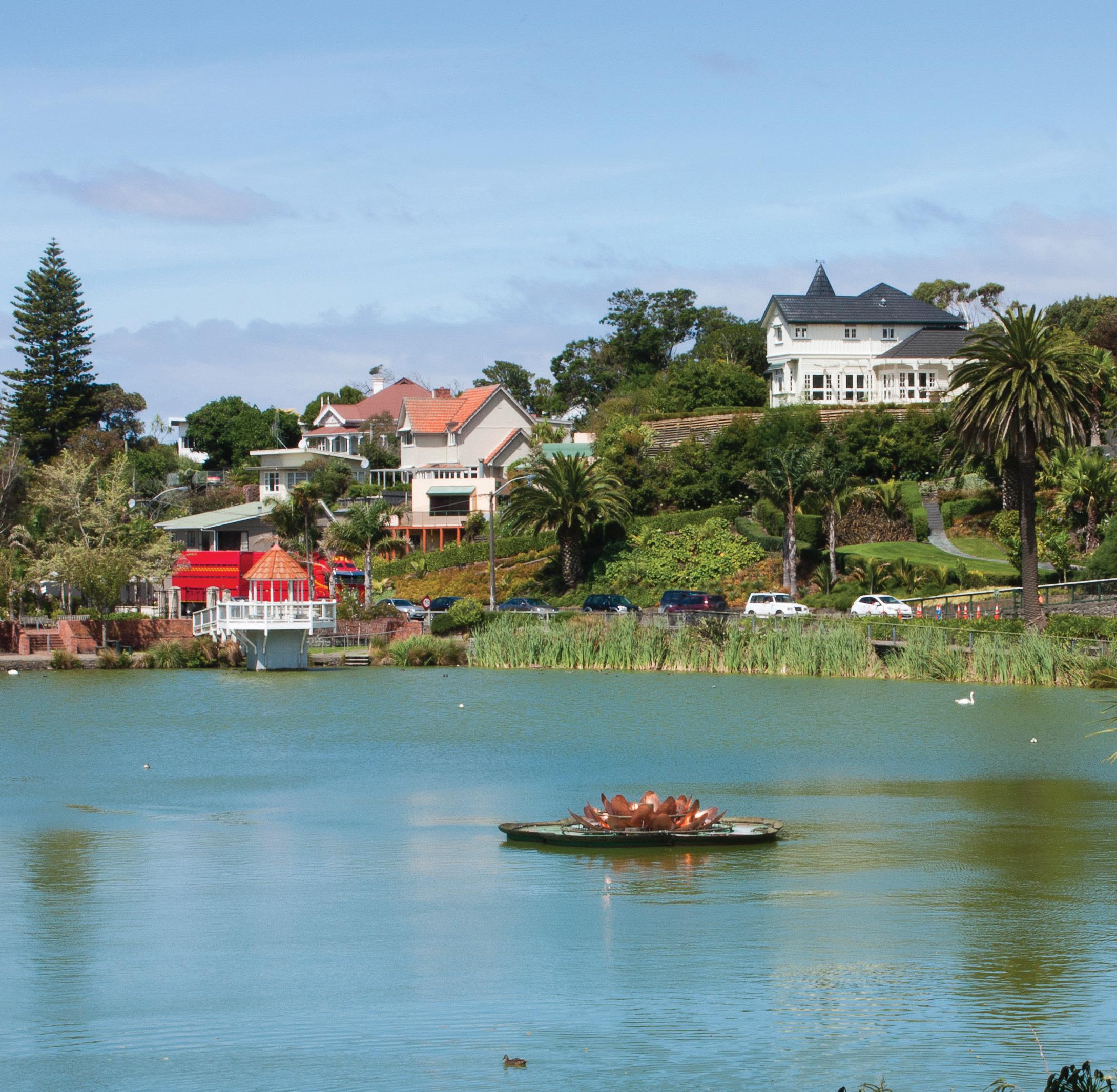
3 minute read
Relax in Whanganui
Whanganui City is surrounded by black-sand beaches and rests on the banks of New Zealand’s longest navigable river: the legendary Whanganui River.
The city’s famed Durie Hill Elevator is burrowed 213 metres into hillside and from here you can take an antique elevator 65.8 metres to the summit. At the top,176 steps lead to the War Memorial Tower for views as far as Mt Taranaki and Mt Ruapehu. Delve into the town’s past with a 60-minute self-guided tour from the i-SITE, Putiki Church boasts intricate wood carvings and wall carvings detailing the city’s rich history. Catch a short ride on Mable, a restored tram, or make your own paperweight at New Zealand Glassworks. Whanganui locals are a very creative bunch, and when they’re not crafting objet d’art from strewn driftwood, clay and glass, they’re browsing the River Trader’s Market or seeking inspiration at The Sarjeant Gallery. Whanganui City will definitely make art lovers giddy.
Advertisement

Lake Virginia, Whanganui © Getty Images
Whanganui National Park
THE WHANGANUI RIVER IN WHANGANUI NATIONAL PARK WAS AN IMPORTANT TRANSPORT ROUTE FOR MĀORI AND EUROPEAN SETTLERS. IT’S NOW HOME TO THE WHANGANUI RIVER JOURNEY, THE MOUNTAINS TO SEA CYCLE TRAIL AND GLORIOUSLY RUGGED TRAMPS.
Whanganui River Journey
It’s a ‘great walk’, but there’s no walking involved on the Whanganui River Journey in Whanganui National Park. This is all the need-to-know information you’ll need for the adventure.
Five days on the Whanganui River will provide that very indulgence sought by all, yet rarely found: pure,unadulterated adventure.
Canoes are hired from companies in surrounding Ruapehu townships, transported to your chosen departure point and then, after a quick safety briefing, that’s it: you’re sent on your way down the river.
Most canoes accommodate two rowers which is ideal because for most, negotiating rapids is a two-person job. Put the lightweight passenger upfront to spot for hidden snags, which at their very worst can wrap canoes into such a tight grip, it takes ages for them todetach – and spells the immediate end of your trip. In the back, you want the muscle; the brawn that will steer you successfully away from a cliff face.

Canoeing on Whanganui River © Visit Ruapehu
For the most part, there are very few turbulent rapids to navigate. Theriver, enveloped in soaring cliffside, is tucked serenely into a gorge; the water so reflective, it’s hard to believe your paddle doesn’t shatter the surface. Multi-tiered waterfalls pour from heaven, while others trickle in coves you cannot see.
The journey is linked by breathtaking DOC campsites. Many are elevated with views stretching miles downriver and come dusk, sunsets to die for. Tieke Kāinga is a DOC hutcum-marae worth weaving into your agenda, because if the hosts are on site, you’ll get to partake in a pōwhiri.

Bridge to Nowhere © Visit Ruapehu
KNOW BEFORE YOU GO
• The Whanganui River Journey is three to five days long and guided tours are also available.
• Canoes accommodate two rowers and four barrels (twolarge and two small) for your belongings.
• DOC huts are not facilitated – pack a camping stove!
• Booking DOC campsites is required between October and April.
• Campsites are often located at the top of steep embankments and you’re required to carry everything you need up there.

Canoes on Whanganui River © Whanganuinz.com










